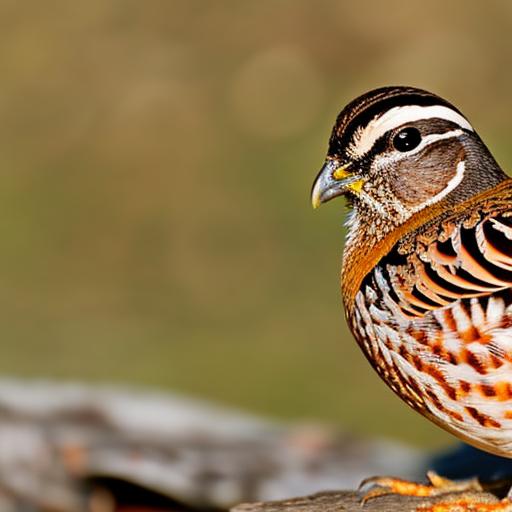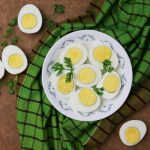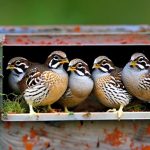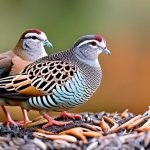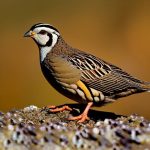Quails are small, ground-dwelling birds that are known for their social behavior and tendency to form flocks. They are primarily active during the day and are often found foraging for food in open areas such as grasslands, agricultural fields, and meadows. Quails are also known for their ability to fly short distances, but they prefer to run and hide in dense vegetation when threatened. Understanding quail behavior is essential when it comes to implementing effective strategies for keeping them away from specific areas.
Quails are highly social birds and tend to gather in groups, making it important to address the issue of quail infestation comprehensively. They are also attracted to areas with abundant food sources, such as grains, seeds, and insects. Additionally, quails are known to seek out areas with suitable cover for nesting and protection from predators. By understanding these behaviors, property owners can better identify the areas that are most attractive to quails and implement targeted strategies to deter them.
Key Takeaways
- Quail are ground-dwelling birds that are active during the day and prefer open areas with low vegetation.
- Physical barriers such as fences and netting can be effective in preventing quail from entering specific areas.
- Natural deterrents like predator urine and motion-activated sprinklers can help keep quail away from unwanted areas.
- Removing food sources such as spilled birdseed and fallen fruits can discourage quail from frequenting certain areas.
- Scare tactics like loud noises, visual deterrents, and predator decoys can be used to frighten quail away from specific locations.
- Seeking professional help from wildlife control experts may be necessary for persistent quail problems.
- Being mindful of local regulations regarding the handling and control of quail is important to avoid legal issues.
Creating Physical Barriers
One effective way to keep quails away from specific areas is by creating physical barriers that prevent them from accessing those spaces. This can be achieved by installing fencing or netting around gardens, agricultural fields, or other areas where quails are causing damage. The fencing should be tall enough to prevent quails from flying over it and buried into the ground to prevent them from burrowing underneath. Additionally, using netting with small enough gaps can prevent quails from squeezing through and accessing the area.
Another physical barrier that can be effective in deterring quails is the use of scare tape or reflective materials. These can be hung around the perimeter of the area to create a visual deterrent for quails. The movement and reflection of light off these materials can startle the birds and discourage them from entering the area. It’s important to regularly inspect and maintain these physical barriers to ensure their effectiveness in keeping quails at bay.
Using Natural Deterrents
In addition to physical barriers, natural deterrents can also be effective in keeping quails away from specific areas. One such deterrent is the use of predator decoys, such as plastic owls or hawks, which can create the illusion of a threat to quails. These decoys should be moved regularly to prevent quails from becoming accustomed to their presence.
Another natural deterrent is the use of scent repellents, such as predator urine or essential oils with strong odors that quails find unpleasant. These can be applied around the perimeter of the area or on specific plants that quails are targeting. It’s important to reapply these repellents regularly, especially after rain, to maintain their effectiveness.
Removing Food Sources
Quails are attracted to areas with abundant food sources, so removing or reducing these food sources can help deter them from specific areas. This can be achieved by keeping gardens and agricultural fields free of fallen fruits, seeds, and grains that quails feed on. Additionally, using bird feeders that are designed to prevent access by ground-feeding birds like quails can help reduce their presence in certain areas.
Another way to remove food sources for quails is by implementing proper waste management practices. This includes securing garbage cans and compost bins to prevent access by quails and other wildlife. By removing these food sources, property owners can make the area less attractive to quails and encourage them to seek food elsewhere.
Implementing Scare Tactics
Scare tactics can be an effective short-term solution for deterring quails from specific areas. This can include using noise-making devices, such as propane cannons or electronic sound emitters, to startle quails and discourage them from entering the area. It’s important to vary the timing and location of these scare tactics to prevent quails from becoming habituated to them.
Another scare tactic that can be effective is the use of visual deterrents, such as scarecrows or helium balloons with predator eyes painted on them. These visual deterrents can create the illusion of a threat and discourage quails from entering the area. It’s important to regularly move and change the appearance of these visual deterrents to prevent quails from becoming accustomed to them.
Seeking Professional Help

In some cases, dealing with a quail infestation may require professional assistance. Pest control companies or wildlife management professionals have the expertise and resources to effectively address quail infestations. They can assess the situation, identify the underlying causes of the infestation, and implement targeted strategies to deter quails from specific areas.
Professional help may also be necessary if the infestation is particularly severe or if property owners are dealing with legal restrictions on how they can address the issue. Wildlife management professionals can provide guidance on how to navigate local regulations and implement effective strategies for managing quail infestations in compliance with the law.
Being Mindful of Local Regulations
When implementing strategies for deterring quails from specific areas, it’s important to be mindful of local regulations regarding wildlife management. Some areas may have restrictions on the use of certain deterrents or require permits for certain types of pest control measures. Property owners should familiarize themselves with these regulations and ensure that they are in compliance when addressing quail infestations.
Additionally, property owners should consider the potential impact of their chosen deterrent strategies on other wildlife species and the environment. It’s important to prioritize non-lethal and environmentally friendly deterrent methods whenever possible to minimize negative impacts on local ecosystems.
In conclusion, understanding quail behavior is essential for effectively deterring them from specific areas. By creating physical barriers, using natural deterrents, removing food sources, implementing scare tactics, seeking professional help when necessary, and being mindful of local regulations, property owners can effectively manage quail infestations while minimizing negative impacts on the environment.
Looking to keep quail out of your yard? Check out this helpful article on PoultryWizard.com for tips and tricks on how to create a quail-proof environment in your yard. Whether it’s building a large chicken coop (source), finding the right chicken coop for your needs (source), or understanding if turkeys need a coop (source), PoultryWizard has you covered with expert advice and practical solutions.
FAQs
What are quail and why are they a problem in yards?
Quail are small, ground-dwelling birds that can cause damage to yards by digging for food, creating dust baths, and leaving droppings. They can also be a nuisance by making noise and potentially attracting predators.
What are some effective methods for keeping quail out of your yard?
Some effective methods for keeping quail out of your yard include installing physical barriers such as fences or netting, using scare tactics such as motion-activated sprinklers or decoys, and removing food sources such as spilled birdseed or fallen fruits.
Are there any natural deterrents that can be used to keep quail away?
Some natural deterrents that can be used to keep quail away include planting dense shrubs or ground cover to make the yard less attractive to quail, using natural predators such as dogs or cats, and creating an environment that is less hospitable to quail by reducing water sources and hiding spots.
Are there any legal restrictions on how to keep quail out of your yard?
It is important to check local regulations and laws before implementing any methods to keep quail out of your yard. In some areas, quail may be protected species, and certain methods of control may be prohibited.
What are some long-term solutions for keeping quail out of your yard?
Some long-term solutions for keeping quail out of your yard include modifying the landscape to make it less attractive to quail, consistently removing food sources and hiding spots, and implementing a combination of deterrent methods to discourage quail from frequenting the yard.
Meet Walter, the feathered-friend fanatic of Florida! Nestled in the sunshine state, Walter struts through life with his feathered companions, clucking his way to happiness. With a coop that’s fancier than a five-star hotel, he’s the Don Juan of the chicken world. When he’s not teaching his hens to do the cha-cha, you’ll find him in a heated debate with his prized rooster, Sir Clucks-a-Lot. Walter’s poultry passion is no yolk; he’s the sunny-side-up guy you never knew you needed in your flock of friends!

